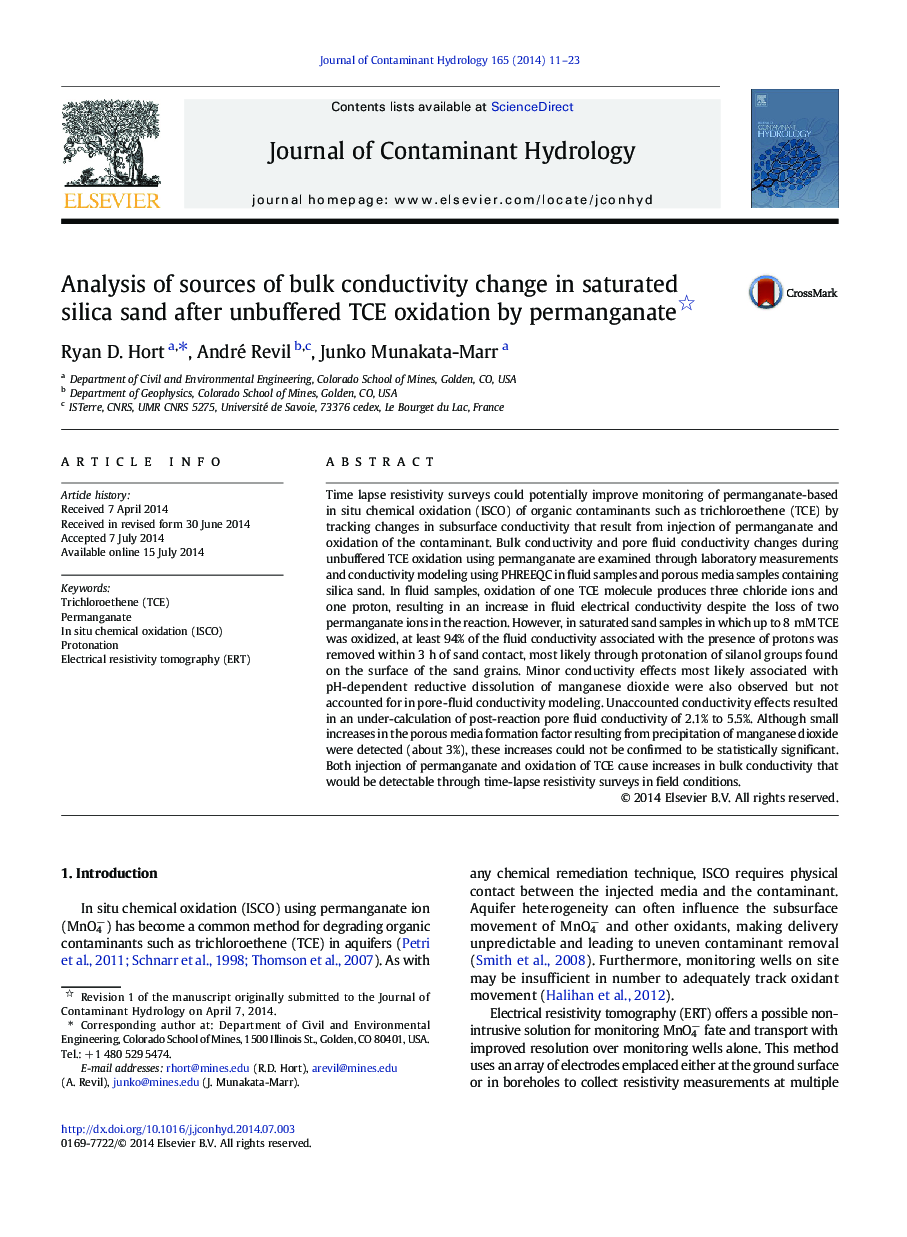| کد مقاله | کد نشریه | سال انتشار | مقاله انگلیسی | نسخه تمام متن |
|---|---|---|---|---|
| 4546521 | 1627043 | 2014 | 13 صفحه PDF | دانلود رایگان |

• TCE oxidation increases fluid and bulk electrical conductivity in saturated sand.
• PHREEQC was used to model changes in pore fluid conductivity from TCE oxidation.
• Silica sand protonation removed at least 94% of H+-related pore fluid conductivity.
• PHREEQC underpredicted pore fluid conductivity by 2.1 to 5.5% in saturated sand.
• Formation factor changes from MnO2 production were not statistically significant.
Time lapse resistivity surveys could potentially improve monitoring of permanganate-based in situ chemical oxidation (ISCO) of organic contaminants such as trichloroethene (TCE) by tracking changes in subsurface conductivity that result from injection of permanganate and oxidation of the contaminant. Bulk conductivity and pore fluid conductivity changes during unbuffered TCE oxidation using permanganate are examined through laboratory measurements and conductivity modeling using PHREEQC in fluid samples and porous media samples containing silica sand. In fluid samples, oxidation of one TCE molecule produces three chloride ions and one proton, resulting in an increase in fluid electrical conductivity despite the loss of two permanganate ions in the reaction. However, in saturated sand samples in which up to 8 mM TCE was oxidized, at least 94% of the fluid conductivity associated with the presence of protons was removed within 3 h of sand contact, most likely through protonation of silanol groups found on the surface of the sand grains. Minor conductivity effects most likely associated with pH-dependent reductive dissolution of manganese dioxide were also observed but not accounted for in pore-fluid conductivity modeling. Unaccounted conductivity effects resulted in an under-calculation of post-reaction pore fluid conductivity of 2.1% to 5.5%. Although small increases in the porous media formation factor resulting from precipitation of manganese dioxide were detected (about 3%), these increases could not be confirmed to be statistically significant. Both injection of permanganate and oxidation of TCE cause increases in bulk conductivity that would be detectable through time-lapse resistivity surveys in field conditions.
Figure optionsDownload as PowerPoint slide
Journal: Journal of Contaminant Hydrology - Volume 165, September 2014, Pages 11–23